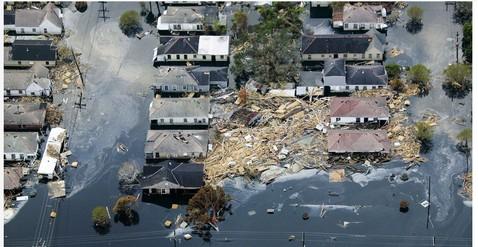Weather Disasters
Weather is an integral element of nature. It plays a distinct role in the distribution of rainwater across the world. Although the weather constantly changes, people do not take note of minor changes. Most of these changes are common and do not lead to calamities (Laska, 2019). However, weather disasters may occur from time to time in different locations. Weather disasters are catastrophic events caused by natural processes of the earth (Ahrens & Henson, 2015). These events cause the destruction of properties, loss of life, and change of topographical settings.
Common weather disasters include hurricanes, floods, volcanic eruptions, and tornadoes. Hurricane Katrina is one of the most devastating weather disasters of modern times. This Hurricane was classified under category 5, the most potent category a hurricane can get. Meteorological data reveals that Katrina developed from a tropical depression first spotted in the Caribbean water over the Southern Bahamas (Holladay, 2018). A tropical depression is a region of low pressure with a loosely linked cluster of thunderstorms. Within two days of the first sighting, the winds had gathered strength, and the circular motion typical of a hurricane had become more organized. The tropical depression slowly turned into a storm with wind speeds reaching 73 mph (Taylor, Levine, Rooksby & Sobotta, 2015). Winds were picking speed as they moved from one location to another, eventually creating a category one hurricane as the tropical storm made landfall in Miami and Florida. The storm lasted 8 hours over land submerged in water and intensified as it moved toward the Gulf of Mexico (National Geographic, 2021). Within five days, the storm had progressed from a tropical storm to a category three hurricane. As it progressed toward Louisiana, Katrina became a category four hurricane and made its second landfall near the Pearl River (Holladay, 2018).
Hurricane Katrina was so devastating that thousands of people still feel its effects to date.

The Hurricane hit several regions, including the Bahamas, eastern Canada, Alabama, Mississippi, Cuba, south Florida, and Louisiana, leaving a trail of death and destruction. Katrina affected a region of about 900,000 miles2 from eastern Texas to central Florida (Holladay, 2018) It is estimated that over 15 million people were affected (Katrina Taylor, Levine, Rooksby & Sobotta, 2015). Although estimates indicate that over 1833 people died from Hurricane Katrina, this number is still debatable.
New Orleans, Mississippi, and Louisiana were the most significant hit regions. New Orleans, for instance, was almost entirely submerged in flood surges, as indicated in figure 1 below. All the artificial levees were destroyed, thus, allowing stormwater into the cities (Holladay, 2018). Besides destroying the delicate coastal habitats, Katrina also destroyed sugarcane and cotton plantations in the region.
Fig 1: New Orleans flooding (National Geographic, 2021).
Properties worth over $80 billion were destroyed in New Orleans, whereas the economic impact of the storm in Mississippi and Louisiana is estimated at $150 billion (Deryugina, Kawano & Levitt, 2018). Apart from the economic and environmental destruction, Katrina also affected many people's physical and psychological health. The study by Raker et al. (2019) revealed that many people are still trying to come to terms with the destruction and other catastrophic consequences of Katrina. Most of those directly affected by Katrina suffer from Post-Traumatic Stress Disorder. The psychological impact of Katrina was shown to be greatest
among those who chose to stay despite the loss of property and the deaths of their loved ones (Raker et al., 2019).
References
Ahrens, C. D., & Henson, R. (2015). Meteorology Today. Cengage Learning, Deryugina, T., Kawano, L., & Levitt, S. (2018). The economic impact of Hurricane Katrina on its victims: evidence from individual tax returns. American Economic Journal: Applied Economics, 10(2), 202-33. https://doi.org/10.1257/app.20160307
Holladay, B. (2018). Hurricane Katrina and the Flooding of New Orleans. A Natural Disaster and its Consequences. GRIN Verlag.
Laska, S. (2019). Louisiana’s Response to Extreme Weather. Springer Nature, National Geographic (2021).New Orleans Katrina Aftermath. https://www.nationalgeographic.org/article/making-history-hurricane/ Raker, E. J., Lowe, S. R., Arcaya, M. C., Johnson, S. T., Rhodes, J., & Waters, M. C. (2019). Twelve years later: The long-term mental health consequences of Hurricane Katrina. Social Science & Medicine, pp. 242, 1–10. https://doi.org/10.1016/j.socscimed.2019.112610
Taylor, W. M., Levine, M. P., Rooksby, O., & Sobotta, J. K. (Eds.). (2015). The" Katrina Effect": On the Nature of Catastrophe. Bloomsbury Publishing.
